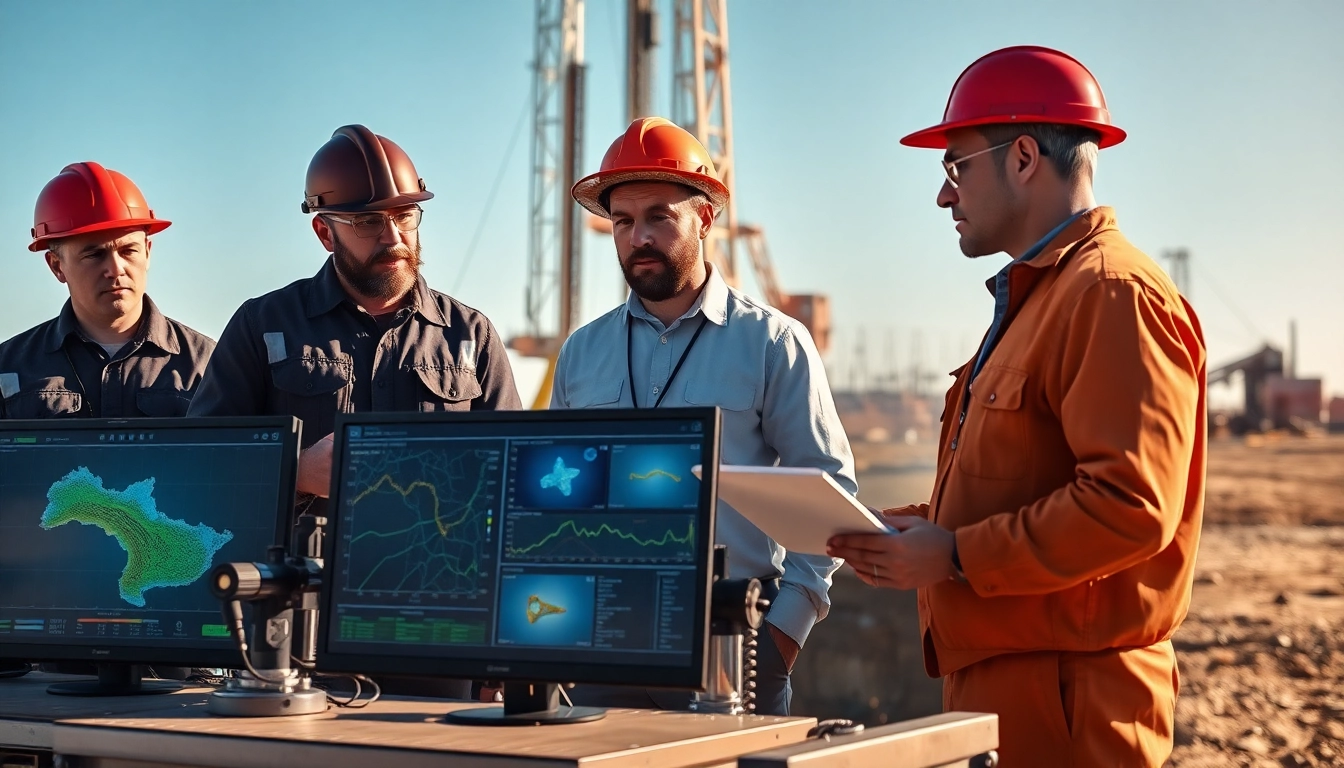Understanding Geosteering: Techniques and Benefits
Geosteering represents a pivotal advancement in the oil and gas exploration and drilling sector, encompassing methodologies that align drilling operations with geological formations. This technique enables operators to adjust the wellbore position in real-time, aiming for maximum efficiency and output. At the core of geosteering’s effectiveness is its integration of data analytics, technological innovation, and strategic planning. One of the key resources for insights and solutions in this domain is www.geosteeringvision.com.
What is Geosteering?
Geosteering can be defined as the process of continuously evaluating and adjusting the trajectory of a wellbore based on real-time geological and geophysical data. The aim is to optimize the placement of the well within productive reservoirs, thus enhancing the overall efficiency of the drilling process. By incorporating data from Mud Logging, LWD (Logging While Drilling), and other forms of real-time monitoring, operators can maintain the well within desired geological zones, minimizing risks associated with poor positioning.
Key Advantages of Effective Geosteering
Successful geosteering offers multiple advantages that can significantly influence the profitability and efficiency of drilling operations:
- Improved Drilling Accuracy: Real-time adjustments based on geological data enhance the precision of wellbore placement.
- Increased Recovery Rates: Optimizing well trajectories can lead to higher hydrocarbon recovery from reservoirs.
- Cost Reduction: Effective geosteering minimizes drilling failures and associated costs, reducing the overall expenditure of drilling projects.
- Enhanced Safety: Reducing the likelihood of unexpected geological hazards enhances operational safety.
Common Challenges in Geosteering
While the benefits of geosteering are compelling, several challenges must be addressed to optimize its efficiency:
- Data Overload: The integration of vast amounts of real-time data can overwhelm operators and lead to decision-making delays.
- Geological Uncertainty: Variability in geological formations can result in unexpected drilling conditions, impacting well trajectory.
- Technological Integration: Ensuring that diverse tools and technologies work seamlessly can be a logistical challenge.
Technology Used in Geosteering Practices
The technological landscape of geosteering encompasses various analytical tools and equipment that aid in achieving optimum drilling results. The effectiveness of geosteering practices is largely dependent on the technology employed throughout the drilling process.
Real-Time Data Analytics and its Impact
Real-time data analytics is the backbone of modern geosteering strategies. Advanced analytical tools process geological and drilling data instantaneously, allowing for immediate adjustments in wellbore placement. The use of predictive analytics enables teams to anticipate geological changes, leading to proactive rather than reactive decision-making. Incorporating big data solutions also enhances overall operational intelligence, fostering a comprehensive understanding of subsurface conditions.
Tools and Equipment for Geosteering
Several tools and equipment are integral to effective geosteering. These include:
- Logging While Drilling (LWD): Tools that provide continuous data on formation properties.
- Directional Drilling Equipment: Systems that allow for precise control of drill bit orientation.
- Geological Modeling Software: Programs that enhance visualization and understanding of subsurface formations.
Integrating Software Solutions for Enhanced Decision Making
Software solutions play a critical role in optimizing geosteering operations. By integrating various data sources, these platforms facilitate informed decision-making processes. Advanced geosteering software can model geological formations in three dimensions, allowing operators to visualize possible drilling outcomes. Implementing machine learning algorithms also enables predictive analyses, assisting teams in identifying optimal drilling paths based on historical and real-time data.
Best Practices for Successful Geosteering
Successful geosteering requires a disciplined approach that incorporates strategic planning, continuous monitoring, and rigorous post-drilling analysis. By adhering to established best practices, teams can maximize their drilling efficiency.
Planning and Strategy Development
The foundation of successful geosteering is laid during the planning phase. Developing a robust stratigraphic model based on geological surveys and seismic data informs drilling strategies. Understanding the target formation and potential geological hazards is crucial in determining the optimal drilling trajectory. Involving cross-functional teams early in the planning process promotes collaboration and enhances strategy formulation.
Monitoring and Adjusting During Drilling
Constant monitoring of drilling parameters and geological data is key to effective geosteering. Real-time data feeds allow teams to make immediate adjustments to the drilling trajectory as necessary. Implementing a robust communication structure between the drilling crew and geological consultants ensures timely interventions, ultimately leading to a successful drilling outcome.
Post-Drilling Analysis and Reporting
Post-drilling analysis is an integral part of geosteering success. Conducting a detailed evaluation of drilling outcomes against the initial geological models provides valuable insights into performance. Documenting lessons learned helps improve future drilling endeavors, as well as supports ongoing training and development for new team members.
Case Studies: Successful Geosteering Implementations
Examining real-world implementations of geosteering can provide vital insights into its efficacy. Successful case studies often illustrate the direct application of best practices in geosteering.
Notable Projects and Outcomes
Projects that employed advanced geosteering techniques have reported significant enhancements in drilling performance. Notable outcomes include higher recovery rates and reduced drilling times, resulting in overall cost savings. These projects highlight the importance of real-time data integration and strategic decision-making throughout the drilling process.
Lessons Learned from Geosteering Experiences
Analysis of completed geosteering projects often reveals key lessons regarding the importance of flexibility and adaptability. Operators who embraced the use of real-time data were better equipped to navigate unforeseen geological challenges. Furthermore, documenting failures and successes has proven invaluable in refining future geosteering practices.
Innovations Emerging from Case Studies
Innovations in geosteering technology continue to evolve based on insights gained from various case studies. Enhanced visualization tools and adaptive drilling systems are some of the most notable advancements that have emerged. These innovations not only improve drilling efficiency but also reduce the environmental impact of oil and gas extraction.
Future Trends in Geosteering
As the oil and gas industry evolves, so too does the practice of geosteering. Emerging trends signal a shift toward even more advanced methodologies that integrate cutting-edge technology.
The Role of AI and Machine Learning
Artificial intelligence (AI) and machine learning (ML) are poised to revolutionize geosteering processes. These technologies can analyze vast datasets quickly, identifying patterns and anomalies that human operators may overlook. With AI-powered analytics, teams can forecast geological changes, optimize drilling paths, and enhance recovery rates, all while reducing operational costs.
Environmental Considerations in Geosteering
With increasing scrutiny on environmental impacts, geosteering practices are evolving to incorporate sustainability into their methodologies. Environmental considerations, such as minimizing land disruption and protecting groundwater resources, are becoming fundamental components of drilling strategies. Adapting geosteering practices to align with these considerations not only fulfills regulatory obligations but also enhances a company’s reputation in a socially conscious market.
Predictions for Industry Developments
The future of geosteering is closely tied to advancements in technology, sustainability practices, and industry collaboration. Predictions suggest a greater emphasis on integrated technologies that combine drilling, geological modeling, and data analytics. As geosteering practices continue to advance, operators who adopt innovative approaches will likely dominate the competitive landscape, driving the industry forward toward a more efficient and eco-friendly future.



